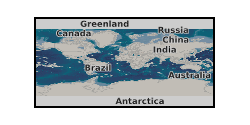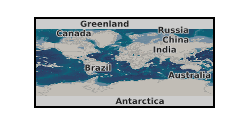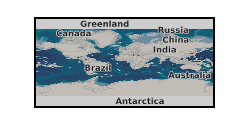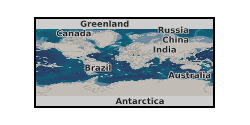csv files
Type of resources
Topics
Keywords
Contact for the resource
Provided by
Years
Formats
Representation types
Update frequencies
-

U-Pb isotope ratio data set for numerous phosphate (apatite) grains in two thin section samples of the LL5 S4-6 Chelyabinsk meteorite. One section is of the S4-6 light lithology, and another of the S5-6 dark lithology. Samples analysed were section ‘A' (light lithology) and section ‘B’ (dark lithology) of Chelyabinsk, both from the Open University School of Physical Sciences sample collection. The results demonstrate variability in degree of Pb-loss during collisional reheating from pristine versus damaged apatite crystal domains. These results are reported for a meteorite fall which originally happened near Chelyabinsk in Russia. The results otherwise have no geographic location, as this is a sample of an asteroid. All measurements were made in December 2020. These data were collected using Secondary Ionisation Mass Spectrometry (SIMS) with a CAMECA IMS 1280 at the Institute of Geology and Geophysics, Chinese Academy of Sciences (IGGCAS). The thin sections were polished with colloidal silica, cleaned, and coated with gold prior to analysis. Microtextural information was obtained prior to analysis using a combination of back-scatter-electron, cathodoluminescence, and electron-back-scatter-diffraction analysis. Data were obtained to test hypotheses relating to the competition between macro-to-meso-scale thermally-driven variation in Pb-loss rates versus microscale variation driven by grain-specific features, e.g., fracture networks. An article describing and discussing these results, including further methodological steps in their collection and processing, is due for publication. This information is currently available in preprint form on arXiv: https://arxiv.org/abs/2112.06038
-

This dataset is a catalogue of elastic stress models of hydraulic fracturing during the 2018 Preston New Road, PNR-1z operations (described in Clarke et al., 2019). This modelling was produced for the publication Kettlety et al. (2020), which studies the physical mechanisms controlling seismicity during hydraulic fracturing. For further details on the modelling approach and context for these data, see Kettlety et al. (2020) and the README file attached here.This is a combined microseismic catalogue of all of the seismic magnitudes recorded for microseismic events recorded during Cuadrilla's Preston New Road hydraulic fracturing operations. 5 magnitude types are given for each event: the downhole measured moment magnitude (Mw); the downhole measured local magnitude (ML); the surface measured ML; the surface measured Mw; and a combined/corrected Mw. This corrected Mw follows the procedure laid out in Kettlety et al. (2021, https://doi.org/10.1785/0220200187) and Baptie et al. (2020, Robust relationships for magnitude conversion of PNR seismicity catalogues. British Geological Survey Open Report, OR/20/042) Functionally, it combines the surface measured Mw and the downhole measured Mw corrected using Equations 4.6 and 4.7 of Baptie et al. (2020). Also included are event origin times, associated injection stages (as described in Clarke et al., 2020, https://doi.org/10.1785/0220190110, and Kettlety et al., 2021), whether this stage was a "minifrac" (just for PNR-1z), the "relative fracture order" (RFO) of that stage, and it's downhole measured location (easting and northing in BNG coordinates, and depth BSL). Downhole measurements Mw and ML were conducting by Schlumberger Ltd. on behalf to the Preston New Road operator Cuadrilla Resources Ldt., and surface ML and Mw were measured by the BGS in Baptie et al., (2020).
-

Wind, sediment transport and surface morphological data collected at Sand Creek during a month long field campaign in March and April 2019 to investigate protodune development under bimodal winds. Data is used in the accepted paper ‘Dune initiation in a bimodal wind regime’, Journal of Geophysical Research: Earth Surface, by Delorme, P., Wiggs, G.F.S., Baddock, M.C., Claudin, P., Nield, J.M. and Valdez, A. (accepted 18th September 2020, article reference number 2020JF005757R; https://repository.lboro.ac.uk/articles/Dune_initiation_in_a_bimodal_wind_regime/12973817) Surface morphological data: This is terrestrial laser scanned (TLS) data collected of the creek sand surface during multiple visits. The data is raw point cloud format in text columns of x, y and z coordinate data. It has been orientation in local format (the origin is located at 13UTM 443152, 4184478). *_full_lowres cover the whole creek surface and the banks on either side. * is the date that the data was collected in yymmdd format. All other data is high resolution section of the actual creek surface within the channel. Each data set uses the same coordinate system. Data can be viewed in any spatial software. Wind and sediment data were collected from a fixed point on the eastern edge of the creek channel. The data is in csv file format with column titles and can be viewed in any text or database software. See Delorme et al. (accepted) for more details.
-

Collection of data from the PhD Thesis "Thermo-mechanical loading of intact rock and discontinuities" by J Woodman. This collection of data includes raw logged .csv datafiles of uniaxial compression testing and triaxial compression testing on intact synthetic compositions, as well as intact and discontinuous specimens of Thornhill Rock and Midgley Grit at both ambient temperatures, and temperatures up to 100°C.
-

Fault lubrication during earthquake propagation in thermally unstable rocks in Central Italy Fieldwork pictures Fucino Basin Fault system: Castel di Monte fault Parasano fault Rocca Casale fault Venere fault Fieldwork pictures L’Aquila Fault System: Assergi fault Bitumen quarry Campo Imperatore Magnola fault Panoramic view Pettino fault Piani di pezza fault Vado di Corno fault Raw data from friction experiments. Links to associated papers: https://doi.org/10.1130/G35272.1 https://doi.org/10.1002/2015JB011914 http://dx.doi.org/10.1016/j.jsg.2013.10.008 http://dx.doi.org/10.1016/j.epsl.2011.09.001 http://dx.doi.org/10.1016/j.epsl.2015.09.002 http://dx.doi.org/10.1130/focus062013.1
-

There is a report highlighting the approach for model construction and recommendations for any future work. There is an excel file pf processed data including time, centrifuge speed, water pressure, and temperature data. There is a zip folder containing photographs of the models, the instrumentaiton and granular ice used for model construction There is a zip folder containing the raw data.
-

This dataset contains broadband seismic data collected between May 2018 and January 2019 as part of the Unsettled Earth project funded by the University of Bristol's Brigstow Institute. The seismic station was deployed in one of the turrets of the Wills Memorial Building Tower, Bristol.
-

Data are either (1) depths and spacings between stylolites and faults within Unit IV, (2) images from IODP drill core image logs of the locations of samples observed, (3) photomicrographs and flatbed thin section scans of thin sections cut from samples, (4) SEM BSE or EDS data collected at Cardiff University. These data form the basis of: Leah et al. "Brittle-ductile strain localisation and weakening in pelagic sediments seaward of the Hikurangi margin, New Zealand", Tectonics, Submitted. Images and data from samples collected at IODP Expedition 375 Site U1520 (38°58.1532'S, 179°7.9112'E, 3522.1 mbsl). This is just seaward (east) of the trench of the Hikurangi Margin, New Zealand.
-

Thermal and Alternating Field demagnetisation data from Carboniferous-age rock material from Cumbria and the Scottish Borders sampled in 2017. This data is divided into multiple four letter coded sections which refer to a specific locality and/or experiment type. BORD are alternating field demagnetisation results on volcanic material from the Scottish Borders, 330 million years old, sampled in the summer of 2017, carried out by Dr Courtney Sprain. BORR are thermal demagnetisation results on volcanic material from Burnmouth Harbour, Longhoughton Beach, Pease Bay, Joppa Shore, Sugar Sands Bay and Ross Beach in the Scottish Borders, 330 million years old, sampled in the summer of 2017, carried out by Dr Courtney Sprain. CMBR are thermal demagnetisation results on rock material from around Cumbria, 330 million years old, and sampled in Spring 2017, sampled and carried out by Dr Courtney Sprain and Dr Mark Hounslow. CUMB are alternating field demagnetisation results on rock material from around Cumbria, 330 million years old, and sampled in spring 2017, sampled and carried out by Dr Courtney Sprain and Dr Mark Hounslow.
 BGS Data Catalogue
BGS Data Catalogue